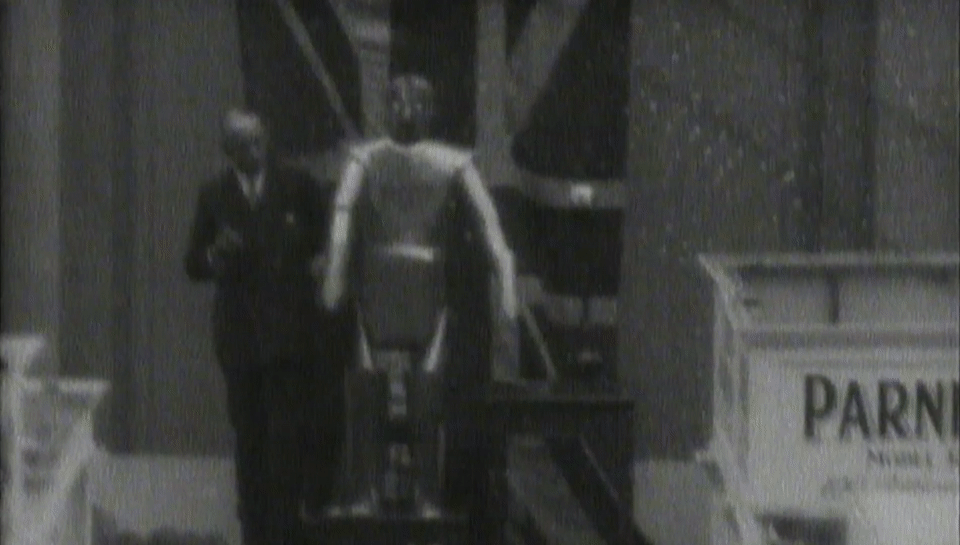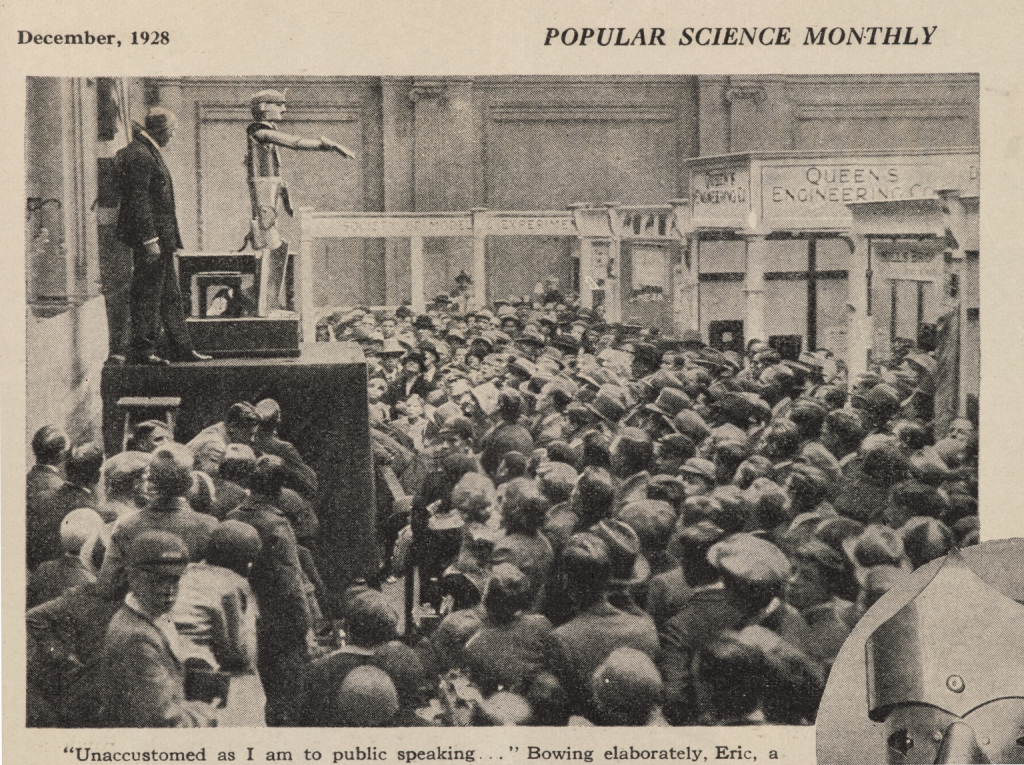Throughout history, artists and scientists have sought to understand what it means to be human. This quest has led us to create stunning paintings, beautiful sculptures and incredible robots. Robots are mirror-like, reflecting our ideas back on ourselves, telling us who we are, how we are and what we think is important.
I’ve always been fascinated by robots and there is one in particular that has intrigued me, Eric. As the UK’s first robot, Eric holds a unique place in our history. Built in the late 1920s, he was everything we now imagine a robot to be – a talking, moving mechanical person.
Then Eric disappeared and no one knows what happened to him. My dream is to rebuild Eric and you can take part by joining our Kickstarter campaign before 17 June 2016.
I discovered Eric’s remarkable story while researching the Science Museum’s next major exhibition, Robots, which opens in February 2017. Eric was the fruit of a remarkable collaboration which began in 1928, between Captain WH Richards and Alan Reffell.
Richards brought an entrepreneurial spirit and connections from a career in the media to the partnership, while Reffell supplied expert technical know-how. Together, they created a robot which wowed audiences across Britain and the USA.
Eric’s debut came in September 1928 at London’s Royal Horticultural Halls – the Duke of York, originally booked to open an exhibition of model engineering had pulled out. Captain Richards remarked, ‘it is a mechanical show, let us have a mechanical man to open it’ and work began on building Eric. He won over his debut audience with what enraptured journalists described as ‘a really sparkling speech’.

Looking back now, you could say Eric was relatively simple. He could stand up, take a bow and move his arms. He was, in a way, everything that we imagined a robot would be. Even now when you ask kids to draw a robot, they draw something that looks like Eric.
Eric’s success was widely reported in the USA, Britain and Europe. He began a series of tours around North America and Britain. An improved version of Eric, called George, was later built but no-one knows what happened to Eric.

Many historic robots were cannibalised for parts, accidentally broken up, or mislaid. For all their robust steel and aluminium construction and sheer size, robots have often proved to be rather ephemeral, and their individual stories have sometimes taken them from riches to rags, before rediscovery and restoration.
Rebuilding Eric’s anatomy needs both curatorial and engineering research, and we’re excited to be working with Giles Walker, a London-based kinetic artist with 20 years of robot-building experience, who will build Eric in his workshop. Even though technology has dramatically changed since Eric was first created in 1928, rebuilding Eric isn’t going to be straightforward as there are no blueprints to work from.

A small number of photos of Eric do survive along with an illustrated article from the 1928 Illustrated London News, but the original creators kept much of Eric’s inner workings a secret. However from those images and some archive film footage we know what Eric was capable of doing and have reverse engineered how he was built (with a certain amount of informed guess work).
The chance to rebuild Eric, who was not just a research tool but a piece of spectacular showmanship and one of the earliest robots ever built, is an opportunity too great to miss.
If you would like to be part of Eric’s remarkable story visit sciencemuseum.org.uk/eric and join us in rebuilding the UK’s first robot.
Ben Russell is lead curator for the Robots exhibition.